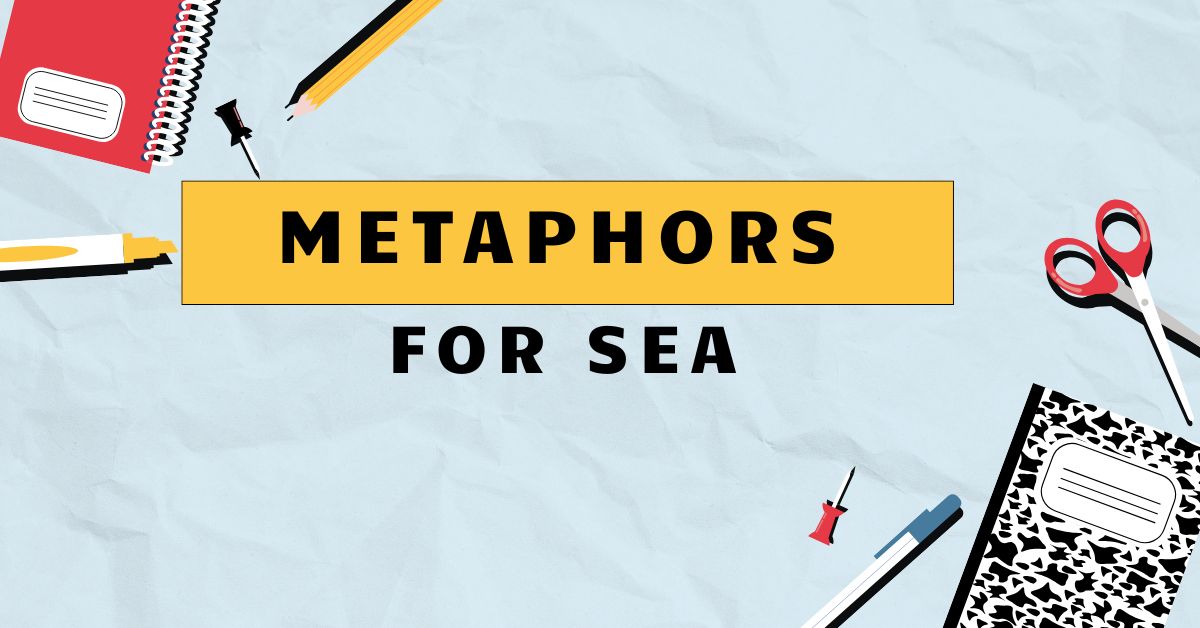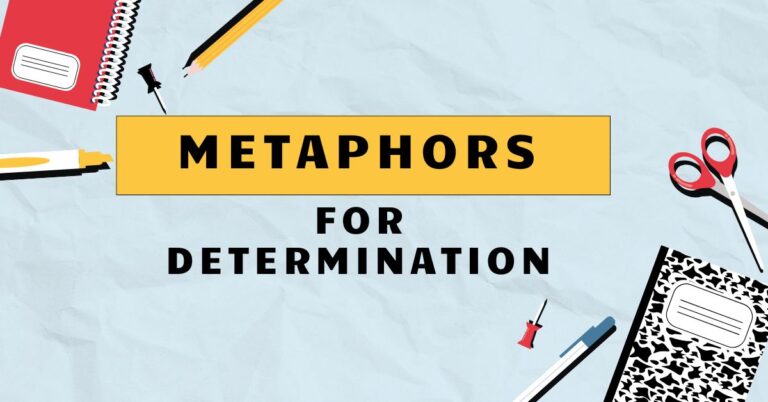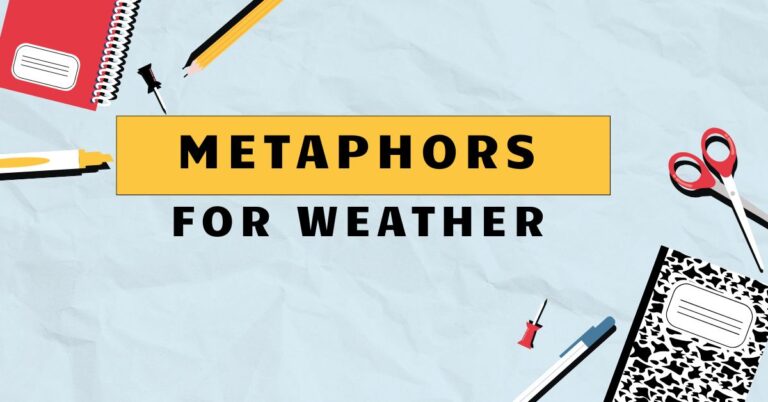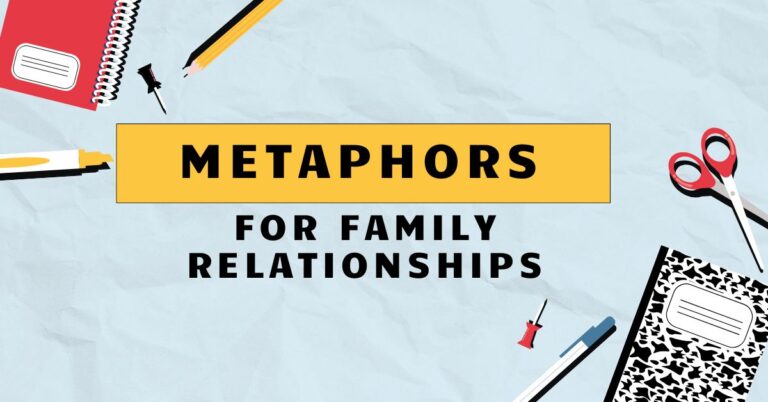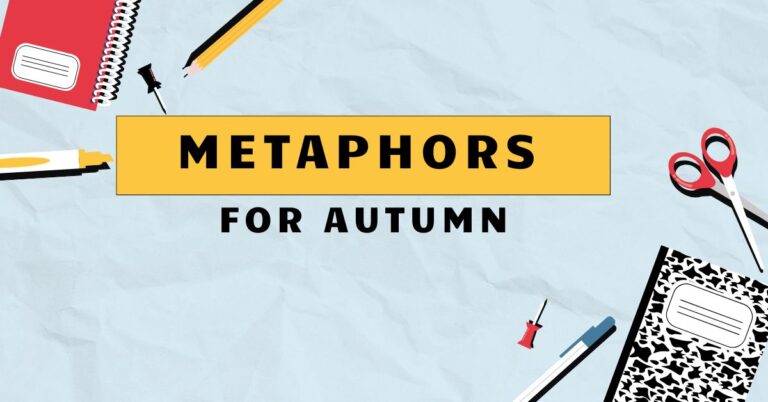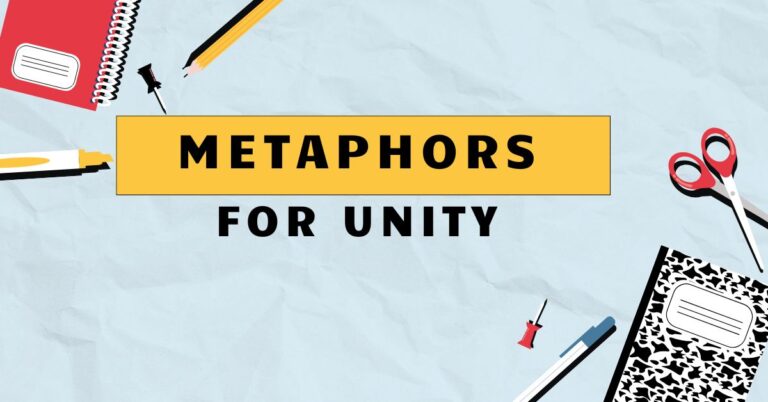41 Metaphors for the Sea: A Comprehensive Grammar Guide
Understanding metaphors is crucial for mastering figurative language and enriching your communication skills. Metaphors allow us to convey complex ideas and emotions by drawing parallels between seemingly unrelated concepts.
This article focuses on metaphors specifically related to the sea, exploring their grammatical structure, usage, and various categories. Whether you’re a student, writer, or language enthusiast, this guide will enhance your comprehension and application of sea-related metaphors in English.
Table of Contents
- Introduction
- Definition of Metaphor
- Structural Breakdown of Sea Metaphors
- Types of Sea Metaphors
- Examples of Sea Metaphors
- Usage Rules for Sea Metaphors
- Common Mistakes with Sea Metaphors
- Practice Exercises
- Advanced Topics in Sea Metaphors
- Frequently Asked Questions
- Conclusion
Introduction
Metaphors are powerful tools in the English language, enabling us to understand abstract concepts through concrete comparisons. The sea, with its vastness, depth, and ever-changing nature, is a particularly rich source of metaphorical imagery.
By using sea metaphors, we can evoke vivid emotions, describe complex situations, and add depth to our writing and speech. This article aims to provide a comprehensive guide to understanding and using metaphors related to the sea, enhancing your linguistic skills and creative expression.
Definition of Metaphor
Ametaphoris a figure of speech that directly compares two unrelated things, asserting that one thing *is* another. Unlike similes, which use “like” or “as” to make a comparison, metaphors imply a resemblance between the two subjects.
The purpose of a metaphor is to create a deeper understanding or appreciation of one of the subjects by highlighting shared qualities or characteristics. Metaphors enrich language, making it more expressive and imaginative.
In the context of the sea, a metaphor might compare a person’s emotional state to the ocean’s tides or a challenging situation to a stormy sea. The sea, in these instances, serves as a vehicle for conveying abstract ideas or emotions in a more tangible and relatable way.
Understanding the nuances of these comparisons is essential for effective communication.
Structural Breakdown of Sea Metaphors
Sea metaphors typically consist of two key elements: thetenorand thevehicle. The tenor is the subject being described, while the vehicle is the sea or sea-related element used to describe it.
The connection between the tenor and the vehicle relies on shared characteristics or associations. Identifying these elements helps in understanding the metaphor’s meaning and impact.
For example, in the metaphor “Her tears were a sea of sorrow,” the tenor is “her tears,” and the vehicle is “a sea of sorrow.” The shared characteristic is the vastness and overwhelming nature of both tears and sorrow. This structure allows for a powerful and evocative comparison, enriching the description of the emotional state.
Metaphors don’t always contain explicit verbs of being (e.g., “is,” “are,” “was,” “were”). Sometimes, the comparison is implied through other verbs or descriptive language that evokes the sea.
Recognizing implicit metaphors is an important skill in understanding figurative language.
Types of Sea Metaphors
Sea metaphors can be categorized based on the specific aspects of the sea they emphasize and the concepts they are used to describe. Here are some common categories:
The Sea as Life
The sea is often used as a metaphor for life, representing its vastness, unpredictability, and constant change. This type of metaphor can highlight the journey of life, the challenges we face, and the opportunities that arise.
The ebb and flow of the tides can symbolize the ups and downs of life, while the deep ocean can represent the mysteries and unknowns that lie ahead.
The Sea as Emotion
The sea’s varying moods, from calm serenity to violent storms, make it a powerful metaphor for human emotions. A calm sea might represent peace and tranquility, while a stormy sea can symbolize turmoil and distress.
The depth of the ocean can also represent the intensity of emotions, suggesting that feelings can run deep and be difficult to fathom.
The Sea as a Challenge
The sea has always posed a challenge to humanity, requiring skill, courage, and resilience to navigate its waters. As a metaphor, the sea can represent any challenging situation or obstacle that requires effort and determination to overcome.
Sailing through rough seas can symbolize facing adversity and persevering despite difficulties.
The Sea as Chaos
The unpredictable and sometimes destructive nature of the sea makes it a fitting metaphor for chaos and disorder. A raging storm can symbolize a chaotic situation, while turbulent waters can represent confusion and uncertainty.
This type of metaphor often highlights the lack of control and the overwhelming nature of chaotic circumstances.
The Sea as Opportunity
The sea can also represent opportunity, adventure, and new beginnings. Exploring uncharted waters can symbolize pursuing new goals and venturing into the unknown.
A calm sea can represent a favorable environment for growth and success, while the vastness of the ocean can suggest limitless possibilities.
Examples of Sea Metaphors
Here are several examples of sea metaphors, categorized by their type. These examples illustrate the diverse ways in which the sea can be used to describe various aspects of life, emotion, challenge, chaos, and opportunity.
Each table provides a range of sentences demonstrating the different uses of the sea metaphor.
The following table presents various examples of “The Sea as Life” metaphors. Each sentence uses the sea to symbolize different aspects of life’s journey, challenges, and experiences.
| Category | Example Sentence |
|---|---|
| Life’s Journey | Life is a vast ocean, full of unexplored territories. |
| Life’s Challenges | Navigating life’s turbulent seas requires courage and resilience. |
| Life’s Opportunities | The sea of possibilities stretched before him, endless and inviting. |
| Life’s Uncertainties | We are all adrift on the sea of time, unsure of our destination. |
| Life’s Rhythms | Life’s ebb and flow is like the ocean’s tide, constantly changing. |
| Life’s Depth | The deeper we delve into life, the more profound its mysteries become, like the ocean’s depths. |
| Life’s Surface | Some people only scratch the surface of life, never diving into its depths. |
| Life’s Storms | Life’s storms may batter us, but they also make us stronger. |
| Life’s Calm | After the storm, life returned to a calm sea, peaceful and serene. |
| Life’s Currents | We are often carried along by the currents of life, sometimes against our will. |
| Life’s Shore | Reaching the shore of old age, he looked back on his life’s voyage. |
| Life’s Voyage | Life is a voyage across the sea, filled with adventures and perils. |
| Life’s Ship | Our bodies are the ships that carry us across the sea of life. |
| Life’s Destination | Some seek a specific destination in life, while others simply enjoy the journey across the sea. |
| Life’s Horizon | The horizon of life is always receding, always just out of reach. |
| Life’s Waves | Life’s waves crash upon us, sometimes gently, sometimes violently. |
| Life’s Treasures | The treasures of life are often hidden in the depths, waiting to be discovered. |
| Life’s Mysteries | Life is a sea of mysteries, some of which we may never understand. |
| Life’s Vastness | The vastness of life can be both exhilarating and overwhelming, like the open sea. |
| Life’s Connectivity | We are all connected by the sea of life, each wave influencing the others. |
| Life’s Opportunities | He sailed into the sea of entrepreneurship, seeking new opportunities. |
| Life’s Challenges | She faced the sea of motherhood with both excitement and trepidation. |
| Life’s Emotions | Their relationship was a tumultuous sea, filled with highs and lows. |
The next table provides examples of “The Sea as Emotion” metaphors. These sentences use the sea to symbolize different emotional states, from calmness to turmoil.
| Category | Example Sentence |
|---|---|
| Sadness | Her tears were a sea of sorrow, endless and deep. |
| Anger | His anger surged like a stormy sea, uncontrollable and destructive. |
| Peace | Her mind was a calm sea, undisturbed by any waves of worry. |
| Fear | Fear washed over him like a tidal wave, engulfing him completely. |
| Love | Their love was a deep ocean, full of mystery and wonder. |
| Joy | Joy bubbled up inside her like a playful wave, light and carefree. |
| Anxiety | Anxiety churned within him like a turbulent sea, never settling down. |
| Despair | Despair engulfed him like a dark sea, pulling him under. |
| Hope | Hope flickered in her heart like a distant lighthouse in a stormy sea. |
| Confusion | His thoughts were a sea of confusion, with no clear direction. |
| Grief | The grief washed over her in waves, each one more painful than the last. |
| Excitement | Excitement surged through her like a rushing tide, full of anticipation. |
| Loneliness | Loneliness surrounded him like a vast, empty sea. |
| Contentment | Contentment settled over her like a calm sea, peaceful and serene. |
| Frustration | Frustration built up inside him like a rising tide, ready to burst. |
| Jealousy | Jealousy festered within her like a dark undercurrent, hidden from view. |
| Nostalgia | Nostalgia washed over him like a gentle wave, bringing back memories of the past. |
| Disappointment | Disappointment crashed over her like a wave, leaving her feeling empty. |
| Resentment | Resentment simmered beneath the surface like an underwater volcano, ready to erupt. |
| Apathy | Apathy enveloped him like a still, lifeless sea, devoid of emotion. |
| Overwhelmed | She was drowning in a sea of emotions, unable to cope. |
| Serenity | His presence brought a sea of serenity to the chaotic room. |
| Agitation | The news stirred up a sea of agitation among the population. |
This table showcases “The Sea as a Challenge” metaphors, illustrating how the sea symbolizes obstacles and difficulties that require strength and determination to overcome.
| Category | Example Sentence |
|---|---|
| Overcoming Obstacles | He battled through the sea of bureaucracy to get his project approved. |
| Facing Adversity | She navigated the stormy seas of her illness with unwavering courage. |
| Perseverance | They sailed against the tide of public opinion, determined to succeed. |
| Resilience | After the setback, he rebuilt his business, weathering the storm like a seasoned captain. |
| Determination | She swam against the current of doubt, determined to achieve her goals. |
| Testing Limits | The marathon runner pushed himself to the limit, crossing the sea of exhaustion. |
| Conquering Fears | He dove into the deep sea of his fears, determined to conquer them. |
| Seeking Growth | She ventured into the uncharted waters of self-discovery, seeking personal growth. |
| Achieving Goals | They navigated the treacherous waters of the industry, finally reaching their destination. |
| Enduring Hardship | He weathered the storms of poverty, emerging stronger and more resilient. |
| Fighting for Justice | They fought against the rising tide of injustice, determined to make a difference. |
| Overcoming Addiction | He battled the turbulent seas of addiction, finally finding his way to sobriety. |
| Dealing with Loss | She navigated the deep waters of grief, slowly learning to cope with her loss. |
| Facing Competition | They swam in a sea of competitors, each vying for the top spot. |
| Navigating Relationships | He navigated the complex waters of his relationship, trying to find common ground. |
| Managing Stress | She found ways to calm the turbulent seas of her stress, finding inner peace. |
| Balancing Work and Life | He struggled to keep his head above water, balancing the demands of work and family. |
| Adapting to Change | They learned to ride the waves of change, adapting to new circumstances. |
| Finding Solutions | She searched the depths of her mind, seeking solutions to her problems. |
| Taking Risks | He jumped into the deep end, taking a risk that could change his life. |
| Confronting Challenges | The team had to navigate a sea of problems to complete the project on time. |
| Pushing Boundaries | The explorer sailed into uncharted seas, pushing the boundaries of human knowledge. |
The following table illustrates uses of “The Sea as Chaos” metaphors. These examples demonstrate how the sea can symbolize disorder, confusion, and unpredictable situations.
| Category | Example Sentence |
|---|---|
| Disorder | The office was a sea of chaos after the merger. |
| Confusion | His thoughts were lost in a sea of confusion, unable to find clarity. |
| Unpredictability | The stock market was a turbulent sea, full of unexpected twists and turns. |
| Turbulence | The political climate was a stormy sea, with constant unrest and conflict. |
| Disruption | The new technology created a sea of disruption in the industry. |
| Pandemonium | The concert ended in a sea of pandemonium as fans rushed the stage. |
| Anarchy | The city descended into a sea of anarchy after the government collapsed. |
| Bedlam | The classroom was a sea of bedlam when the teacher left the room. |
| Turmoil | Her personal life was a sea of turmoil after the divorce. |
| Upheaval | The revolution brought a sea of upheaval to the country. |
| Disarray | The files were scattered in a sea of disarray, making it impossible to find anything. |
| Disorganization | The project was a sea of disorganization, with no clear plan or direction. |
| Mayhem | The shopping mall was a sea of mayhem on Black Friday. |
| Commotion | The accident caused a sea of commotion on the highway. |
| Disruption | The strike created a sea of disruption to the transportation system. |
| Tumult | The protest turned into a sea of tumult as clashes broke out between demonstrators and police. |
| Uncertainty | The future of the company was a sea of uncertainty after the CEO resigned. |
| Instability | The region was plagued by a sea of instability due to ongoing conflicts. |
| Volatility | The cryptocurrency market was a sea of volatility, with prices fluctuating wildly. |
| Ambiguity | The instructions were lost in a sea of ambiguity, leaving everyone confused. |
This table presents examples of “The Sea as Opportunity” metaphors, demonstrating how the sea symbolizes possibilities, adventure, and new beginnings.
| Category | Example Sentence |
|---|---|
| New Beginnings | He saw the new job as a sea of opportunity to advance his career. |
| Potential | The untapped market represented a vast sea of potential for the company. |
| Adventure | She embarked on a journey into the sea of adventure, eager to explore the unknown. |
| Exploration | The research project opened up a sea of exploration into the mysteries of the universe. |
| Discovery | The archaeological dig uncovered a sea of discovery, revealing ancient secrets. |
| Innovation | The startup aimed to create a sea of innovation in the tech industry. |
| Growth | The training program offered a sea of growth opportunities for employees. |
| Advancement | He saw the promotion as a sea of advancement, propelling him towards his goals. |
| Expansion | The company planned to expand into the sea of international markets. |
| Possibilities | The new technology opened up a sea of possibilities for future development. |
| Prospects | The investment offered a sea of prospects for long-term financial gain. |
| Ventures | He launched several new ventures into the sea of entrepreneurship. |
| Horizons | She broadened her horizons by exploring the sea of different cultures. |
| Frontiers | The space program pushed the frontiers of exploration into the sea of the cosmos. |
| Avenues | The new policy created a sea of avenues for social reform. |
| Pathways | The education system provided a sea of pathways for students to achieve their dreams. |
| Scope | The project had a vast sea of scope, encompassing multiple disciplines. |
| Range | The product line offered a sea of range, catering to diverse customer needs. |
| Extent | The impact of the decision reached a sea of extent, affecting countless lives. |
| Domain | The scientist explored the sea of knowledge in his field of expertise. |
Usage Rules for Sea Metaphors
Using sea metaphors effectively requires attention to several rules. First, ensure the comparison between the tenor and the vehicle is clear and logical.
The shared characteristics should be easily recognizable. Second, avoid clichés.
Overused metaphors lose their impact and can make your writing sound unoriginal. Instead, strive to create fresh and imaginative comparisons.
Third, consider the context. The appropriateness of a sea metaphor depends on the subject matter and the intended audience.
A metaphor that works well in a literary context might be less effective in a technical report. Fourth, be consistent.
Avoid mixing metaphors or using conflicting imagery, as this can confuse the reader and weaken your message.
Finally, pay attention to the emotional tone. Sea metaphors can evoke a wide range of emotions, from tranquility to fear.
Choose metaphors that align with the desired emotional effect. For example, if you want to convey a sense of peace, a metaphor involving a calm sea would be more appropriate than one involving a stormy sea.
Common Mistakes with Sea Metaphors
One common mistake is using mixed metaphors, which combine two or more incompatible metaphors in a single statement. This can create confusion and undermine the clarity of your writing.
For example, “He was sailing through a sea of troubles, but he kept his eye on the prize” mixes the metaphor of sailing with the idiom “keep your eye on the prize,” resulting in a disjointed image.
Another mistake is using clichés. Overused metaphors like “a sea of troubles” or “lost at sea” have lost their impact and can make your writing sound uninspired.
Strive to create original metaphors that offer a fresh perspective.
A third mistake is misusing the metaphor, creating a comparison that doesn’t make logical sense. For example, “Her laughter was a deep sea” is not as effective as “Her sadness was a deep sea” because the vastness and depth of the sea better reflect the intensity and extent of sorrow than laughter.
Here’s a table illustrating common mistakes with sea metaphors and their corrections:
| Incorrect | Correct | Explanation |
|---|---|---|
| He was sailing through a sea of troubles, but he kept his eye on the prize. | He was sailing through a sea of troubles, determined to reach calmer waters. | Avoid mixed metaphors. Maintain consistency in imagery. |
| The project was lost at sea. | The project was floundering, lacking direction and support. | Avoid clichés. Use more original and descriptive language. |
| Her laughter was a deep sea. | Her sadness was a deep sea. | Ensure the comparison makes logical sense. The sea better reflects the depth of sorrow. |
| The company was drowning in a sea of opportunities. | The company was overwhelmed by a sea of opportunities. | “Drowning” implies a negative outcome, which contradicts the positive nature of “opportunities.” |
Practice Exercises
Test your understanding of sea metaphors with these practice exercises. Each exercise includes multiple questions designed to challenge your comprehension and application of the concepts covered in this article.
Exercise 1: Identifying Sea Metaphors
Identify the sea metaphor in each sentence and explain what it means.
| Question | Answer |
|---|---|
| 1. The city was a sea of faces, all strangers to him. | Sea of faces: A large crowd of people, all unfamiliar. |
| 2. He navigated the stormy seas of his career with skill and determination. | Stormy seas: A difficult and challenging period in his career. |
| 3. Her anger was a tidal wave, crashing over everyone in its path. | Tidal wave: An overwhelming surge of anger. |
| 4. They were adrift in a sea of uncertainty, unsure of what the future held. | Sea of uncertainty: A state of being lost and confused about the future. |
| 5. The project was sinking under a sea of red tape. | Sea of red tape: Excessive bureaucracy hindering progress. |
| 6. The politician swam against the tide of public opinion. | Swam against the tide: Opposed the prevailing sentiment. |
| 7. The company was riding the wave of success. | Riding the wave: Experiencing a period of great success. |
| 8. He felt like a ship lost at sea, without a compass or a map. | Ship lost at sea: Feeling lost, disoriented, and without direction. |
| 9. Her words were like a soothing sea breeze on a hot summer day. | Soothing sea breeze: Something refreshing and calming. (Simile, but related) |
| 10. The evidence was buried in a sea of documents. | Sea of documents: A large quantity of documents making it difficult to find something specific. |
Exercise 2: Completing Sea Metaphors
Complete the following sentences by adding an appropriate sea metaphor.
| Question | Answer |
|---|---|
| 1. After the argument, their relationship was like _____. | a stormy sea. |
| 2. The possibilities for the future seemed like _____. | a vast ocean. |
| 3. He felt lost and overwhelmed, like _____. | a ship lost at sea. |
| 4. The challenges they faced were like _____. | turbulent waters. |
| 5. Her tears flowed freely, like _____. | a sea of sorrow. |
| 6. The market was _____, full of unpredictable changes. | a volatile sea. |
| 7. They were determined to succeed even if it meant _____. | swimming against the tide. |
| 8. The amount of information was like _____, making it hard to focus. | a sea of data. |
| 9. His anger was like _____, ready to explode at any moment. | a rising tide. |
| 10. She found peace and tranquility in nature, like _____. | a calm sea. |
Exercise 3: Creating Sea Metaphors
Create your own sea metaphor to describe the following situations or emotions.
| Situation/Emotion | Possible Metaphor |
|---|---|
| 1. The feeling of being overwhelmed by work. | Drowning in a sea of tasks. |
| 2. The experience of starting a new business. | Sailing into uncharted waters. |
| 3. The feeling of intense joy. | Riding a wave of happiness. |
| 4. The process of learning a new language. | Navigating the currents of a new language. |
| 5. The state of feeling lost and confused. | Adrift in a sea of confusion. |
| 6. The challenges of raising children. | Navigating the unpredictable seas of parenthood. |
| 7. The experience of overcoming a major obstacle. | Weathering a fierce storm and reaching safe harbor. |
| 8. The feeling of being surrounded by negativity. | Lost in a dark and stormy sea of negativity. |
| 9. The process of searching for inner peace. | Diving deep into the ocean of self-discovery. |
| 10. The feeling of being connected to something larger than oneself. | Part of the vast and interconnected ocean of humanity. |
Advanced Topics in Sea Metaphors
For advanced learners, exploring the historical and cultural significance of sea metaphors can provide deeper insights. The sea has played a central role in human history, influencing mythology, literature, and art.
Understanding these cultural associations can enrich your interpretation and use of sea metaphors.
Another advanced topic is the use of extended metaphors, where a single metaphor is developed over multiple sentences or paragraphs. This technique can create a powerful and sustained image, enhancing the impact of your writing.
For example, you could describe a person’s life as a long sea voyage, detailing the various challenges, triumphs, and discoveries along the way.
Furthermore, consider the interplay between sea metaphors and other figures of speech, such as similes, personification, and symbolism. Combining these techniques can create rich and layered imagery, adding depth and complexity to your writing.
For example, you might personify the sea as a powerful and unpredictable force, using similes to compare its movements to those of a wild animal.
Frequently Asked Questions
Here are some frequently asked questions about metaphors for the sea:
- What is the difference between a metaphor and a simile?
A metaphor directly equates two unlike things (e.g., “He is a lion”), while a simile compares them using “like” or “as” (e.g., “He is like a lion”). Metaphors are more assertive and create a stronger sense of identification, while similes are more tentative and suggestive. - Why is the sea such a common source of metaphors?
The sea’s vastness, depth, unpredictability, and importance to human history make it a rich source of metaphorical imagery. It can represent a wide range of concepts and emotions, from life and death to peace and turmoil. - How can I avoid using clichés when creating sea metaphors?
Strive to create original comparisons by focusing on specific details and unexpected associations. Instead of saying “a sea of troubles,” describe the specific nature of the troubles and how they resemble the sea in a unique way. - Is it okay to mix metaphors when using sea imagery?
Generally, it’s best to avoid mixing metaphors, as this can create confusion and weaken your message. However, skilled writers can sometimes use mixed metaphors intentionally for humorous or stylistic effect. - How can I make my sea metaphors more effective?
Choose metaphors that are clear, logical, and relevant to the context. Consider the emotional tone you want to convey and select metaphors that align with that tone. Use vivid and descriptive language to bring your metaphors to life. - What are some common themes associated with sea metaphors?
Common themes include life’s journey, emotional states, challenges, chaos, opportunity, and the passage of time. The sea can also represent mystery, adventure, and the unknown. - How do cultural associations influence the interpretation of sea metaphors?
Different cultures have different relationships with the sea, which can influence the way sea metaphors are understood. For example, in some cultures, the sea is seen as a source of life and abundance, while in others, it is viewed as a dangerous and unpredictable force. - Can sea metaphors be used in all types of writing?
Sea metaphors can be used in a wide range of writing, from poetry and fiction to essays and speeches. However, it’s important to consider the context and audience and choose metaphors that are appropriate for the situation. - What are some examples of famous sea metaphors in literature?
Examples include Homer’s Odyssey, where the sea represents the challenges and adventures of life; Shakespeare’s use of sea imagery to depict emotional turmoil in Hamlet; and Melville’s Moby Dick, where the sea symbolizes the vast and unknowable forces of nature. - How can I improve my ability to understand and use sea metaphors?
Read widely, paying attention to how writers use sea imagery to create meaning and evoke emotions. Practice creating your own sea metaphors, experimenting with different comparisons and associations. Seek feedback from others on your writing.
Conclusion
Mastering the art of using metaphors for the sea can significantly enhance your communication skills and creative expression. By understanding the structure, types, and usage rules of sea metaphors, you can effectively convey complex ideas, evoke vivid emotions, and add depth to your writing.
Remember to avoid clichés, be consistent with your imagery, and consider the context and audience. With practice and attention to detail, you can harness the power of sea metaphors to enrich your language and captivate your readers.
The sea, with its endless horizons and unfathomable depths, provides a wealth of metaphorical possibilities. By exploring these possibilities, you can unlock new ways of understanding and expressing the human experience.
So, set sail on your own metaphorical voyage, and discover the treasures that await you in the vast ocean of language.

